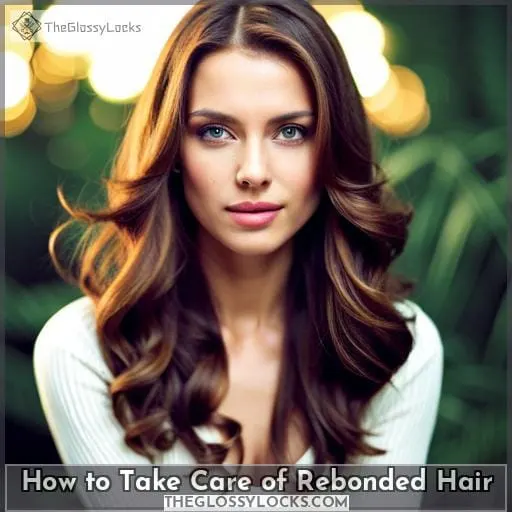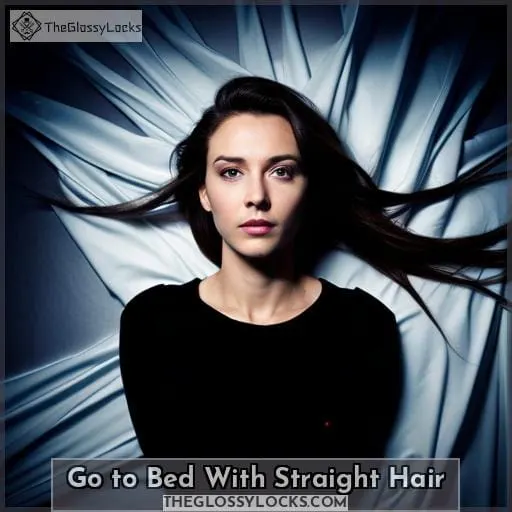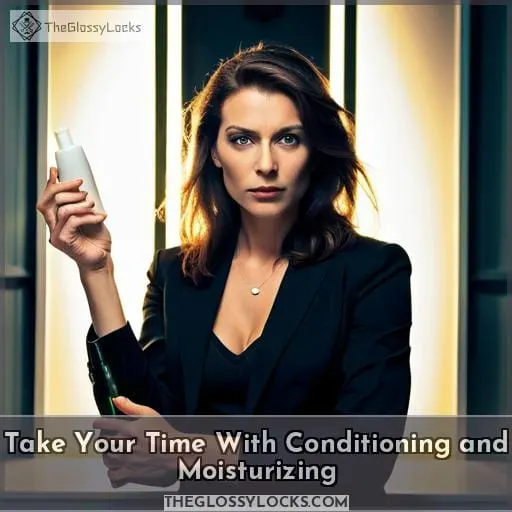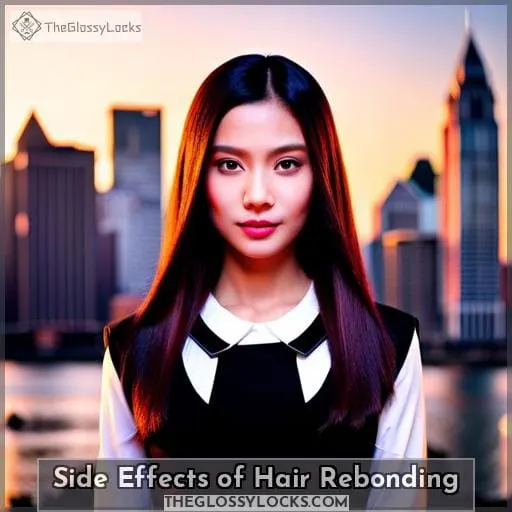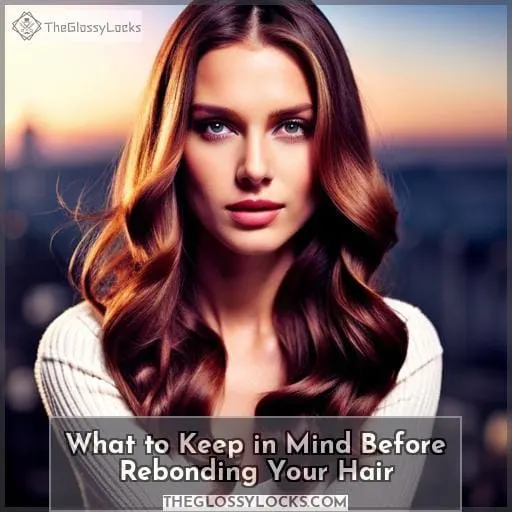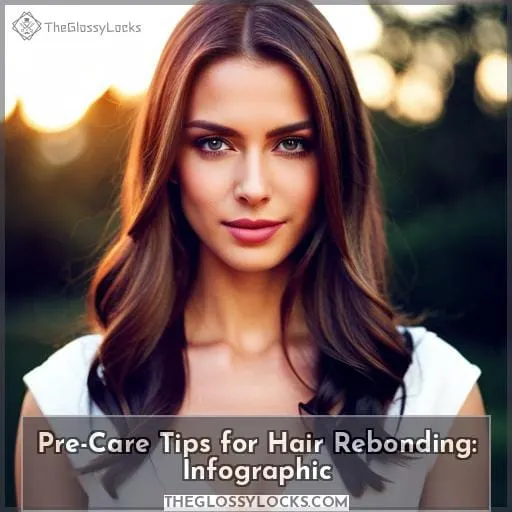This site is supported by our readers. We may earn a commission, at no cost to you, if you purchase through links.
Taking care of rebonded hair can be a challenging task. But with the right knowledge and tools, you can keep your hair looking sleek and healthy for longer.
It’s essential to understand how the process works so that you know what kind of treatments are safe for your newly-rebonded tresses. In this article, we’ll discuss why post-rebonding treatment is important. We’ll also provide tips on maintaining beautiful rebonded hair, as well as warning signs to look out for if something goes wrong during or after the procedure.
With these valuable insights in hand, you’ll have all the information needed to take excellent care of your new straight locks!
Table Of Contents
- Key Takeaways
- What is Hair Rebonding and How is It Done?
- Do Not Wash Your Hair for 72 Hours After Rebonding
- Give Up Hair Ties, Pins, and Clips
- Go to Bed With Straight Hair
- Take Your Time With Conditioning and Moisturizing
- Avoid Heat Styling and Chemical Treatments
- Side Effects of Hair Rebonding
- What to Keep in Mind Before Rebonding Your Hair
- Pre-Care Tips for Hair Rebonding: Infographic
- Frequently Asked Questions (FAQs)
- Conclusion
Key Takeaways
Use specially formulated products for chemically treated hair and avoid additional heat styling and chemical treatments after rebonding.
- Regularly trim split ends, use sulfate-free shampoos, and apply natural oils like coconut or olive oil for effective conditioning.
- Protect rebonded hair from humidity and UVA & UVB rays by wearing hats or scarves and using cold water for washing.
- Touch-ups may be necessary every 3-6 months. Wait at least 72 hours before washing freshly rebonded hair and use gentle combs like wooden wide-tooth ones
What is Hair Rebonding and How is It Done?
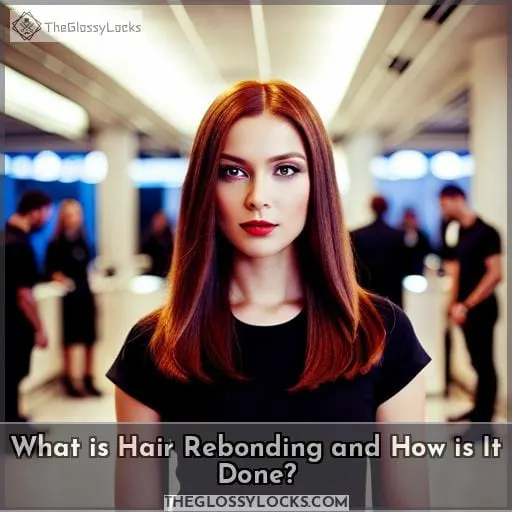
You can transform your hair with the chemical process of rebonding, giving you a sleek and straight look that requires special attention to keep it healthy. Hair rebonding is a permanent chemical procedure that relaxes and changes the structure of your hair using chemicals and heat.
Depending on the length of your hair, this process could take anywhere from 3-8 hours.
After getting rebonded, it’s important to go to bed with dry straightened hair. Also, avoid accessories like pins or clips so that your natural texture does not return too quickly due to friction or contact with water when taking showers.
It’s also recommended that you use specially formulated products such as shampoo or conditioners for chemically treated hair, along with regular oil treatments which help moisturize the scalp.
Additionally, wearing hats or scarves helps protect against humidity damage while avoiding exposing yourself under direct sunlight over long periods of time. Considering UVA & UVB rays tend to strip away keratin, it weakens strands making them brittle over time if precautions aren’t taken seriously.
You may need touch-ups in between every 3-6 months depending on how fast each individual’s natural pattern grows out.
Do Not Wash Your Hair for 72 Hours After Rebonding
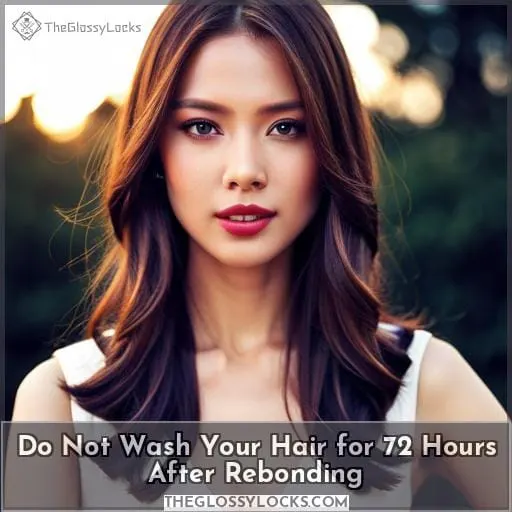
It’s important to wait at least 72 hours before washing your freshly rebonded hair, as the chemicals can take up to three days to fully set.
To protect against humidity damage, it’s recommended that hats or scarves are worn while avoiding direct sunlight exposure over long periods of time. Using gentle combs, such as wooden wide-tooth ones, can also prevent breakage and static flyaways when brushing through wet strands.
Additional alternative treatments include mild shampoos and conditioners specially formulated for chemically treated hair, alongside deep conditioners, leave-in conditioners, regular hot oil massages, plus kitchen ingredients like coconut or olive oils, which provide extra care by moisturizing the scalp area too!
Lastly, avoid chemical treatment procedures either before or after the process of rebonding if possible.
Give Up Hair Ties, Pins, and Clips
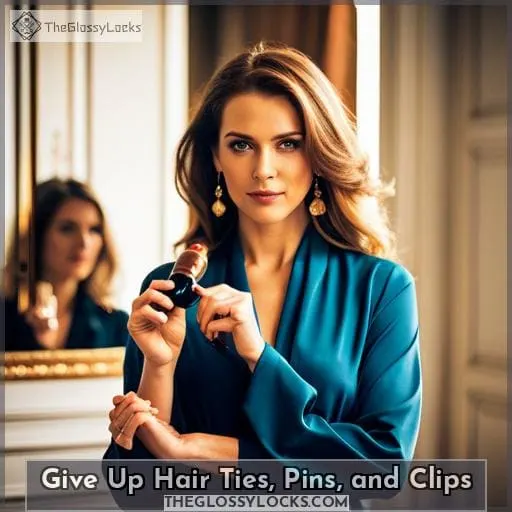
After rebonding, it’s best to avoid accessories like hair ties, pins, and clips to keep your locks looking their best. To protect the delicate hairline area from damage caused by harsh chemicals or alkaline burns, experts recommend applying petroleum jelly before the application of chemical relaxers.
For African or curly-haired women, it’s recommended to opt for no-lye relaxers that are gentler on the scalp than thioglycolate straighteners. Wooden combs are a better option than metal ones as they help reduce breakage and static flyaways when brushing wet strands.
Cold showers are better than hot ones as they help retain moisture in rebonded hair. It’s also important to avoid direct sunlight exposure. Demi-permanent dyeing is a less damaging alternative compared to bleaching.
So, consider using sulfate-free shampoos specifically designed for chemically treated tresses alongside conditioner products that deeply nourish it back to health. Keratin lotion may also restore natural protein lost due to environmental factors.
Go to Bed With Straight Hair
Now that you’ve rebonded your hair, it’s important to maintain a protection routine to keep it looking its best.
To prevent split ends, make sure to trim them regularly and avoid using hot water when washing, as this can cause further damage. Opt for cold water instead, which helps retain natural protein lost due to the harsh outdoor environment.
It’s also beneficial to apply keratin treatments or use special shampoos specifically designed for chemically treated tresses, alongside conditioner products that deeply nourish it back to health.
Finally, be careful when going about your nightly bedtime routine. Always ensure your hair is straight before getting into bed by combing through any tangles gently with a wide-tooth wood comb.
Take Your Time With Conditioning and Moisturizing
To keep your newly-altered locks looking luscious, take the time to condition and moisturize. Think of it as giving a spa day for your tresses! It’s important to use sulfate-free shampoos and special shampoos for treated hair.
Also, make sure you’re using effective conditioning products. A cleansing conditioner can help rid the scalp of product build-up while providing extra hydration.
For much-needed moisture, consider trying out different types of deep conditioning treatments such as protein or oil masks that are especially beneficial after rebonding preparation. Instant conditioners provide an immediate boost in shine with just one application, yet may not be enough long-term if used frequently due to chemicals used in the process.
To ensure healthy hair when using these products regularly, always read instructions carefully before purchase.
Lastly, don’t forget about regular oil treatments like coconut oils which can deeply nourish and protect rebonded hair against future damage caused by environmental factors like humidity or rain showers too harsh sun rays over time
Avoid Heat Styling and Chemical Treatments
It’s important to avoid additional heat styling and chemical treatments after rebonding as these can damage the hair further. Regular trims are recommended to keep split ends at bay. Natural oils such as coconut or olive oil help moisturize and nourish your locks.
Demi-permanent dye is a gentler alternative for coloring your hair than permanent dyes that can cause more drying and breakage of already weakened strands. Colder showers will also help prevent moisture loss from hot water that could strip away protective layers on treated tresses.
Consider wearing hats or scarves in the rain if possible! Side effects from rebonding include frizzy hair, scalp burns, thinning/graying of hairs due to oxidation stress. Taking care of your post-rebonded mane is essential for maintaining its health over time.
Side Effects of Hair Rebonding
You should be aware of the potential side effects of hair rebonding, such as frizzy hair, dandruff, and even scalp burns. Ironically, these may often occur despite your best efforts to care for it. Hair damage due to exposure to chemicals used in the process can also result in split ends and hair loss.
Formaldehyde found in some products is a cancer-causing substance that can cause irritation and damage if not handled properly. It is recommended to avoid hot showers or thermal treatments with flat irons after rebonding, while regular oil treatments are recommended for proper moisturization and nourishment of tresses.
What to Keep in Mind Before Rebonding Your Hair
Now that you’re aware of the potential side effects, it’s important to consider what to keep in mind before rebonding your hair.
Firstly, understand that not all hair types can handle this procedure and may result in serious damage like hair loss or alkaline burns if done incorrectly.
Secondly, protein restoration treatments like keratin can help repair damaged tresses caused by environmental factors while heat protection products prevent further harm from styling tools.
Thirdly, avoid using hotter water when washing your mane as it strips away natural oils and dries out the strands faster. Also, note that the length of the hair plays a major role in how often touch-ups will be required after the initial treatment.
Lastly, cancer-causing substances present in some relaxants should always be taken into consideration during application, regardless of one’s hair type, so make sure you research thoroughly beforehand!
| Keep In Mind | Benefits |
|---|---|
| Hair Types | Understanding which type is best suited for rebonding |
| Protein Restoration Treatments | Helps with repairing damaged tresses due to harsh outdoor environment |
| Heat Protection Products | Prevents further damage from styling tools |
| Length Of The Hair | Makes a difference in how often touch-ups will be needed post-treatment |
Note: Remember these points before considering Rebonding Treatment
Pre-Care Tips for Hair Rebonding: Infographic
Before you decide to get your hair rebonded, bear in mind that there are certain pre-care tips and precautions that must be taken into account.
Firstly, make sure to select the right stylist for your desired look. Secondly, use heat protection products like serums and oils on your mane before any kind of styling or chemical treatments.
Thirdly, avoid washing for 72 hours after rebonding as this can damage the newly treated locks. Fourthly, regular oil treatments with coconut or olive oil will help nourish and moisturize freshly relaxed hair without overloading it with harsh chemicals from salon visits.
Fifthly, even short tresses need extra attention when trying out new looks. So, use simple care tips such as using mild shampooing and conditioning agents along with wooden wide-tooth combs while avoiding direct exposure to heat styling tools which can cause irreversible damage.
Frequently Asked Questions (FAQs)
How often should I get a touch-up for my rebonded hair?
To keep your rebonded hair healthy and sleek, it’s important to schedule regular touch-ups. The frequency of touch-ups will depend on the speed of your natural hair growth, typically every 3-6 months.
Is demi-permanent dye a safe alternative for rebonded hair?
Demi-permanent dye is a safe and effective alternative to regular dye for rebonded hair. However, it is important to consider other options that can protect your hair from further damage.
What types of oils are best for conditioning rebonded hair?
To condition rebonded hair, it is recommended to use natural oils such as coconut, olive, and almond. Jojoba and castor oil are also beneficial for nourishing the hair and providing extra moisture for a healthy shine.
Are there any kitchen ingredients I can use to make a hair mask?
You can use kitchen ingredients such as olive oil, coconut oil, almond oil, and jojoba to create your own hair mask. These natural oils deeply condition rebonded hair, providing a smooth and nourished finish while restoring lost protein.
How can I protect my rebonded hair from humidity?
To protect your rebonded hair from humidity, consider wearing a hat, scarf, or using an umbrella when outside.
Conclusion
To ensure that your hair remains healthy and luscious after rebonding, it is important to follow the necessary steps and precautions. If you desire straight, manageable hair, then rebonding may be the right choice for you.
However, it is important to remember that taking care of your hair before and after rebonding will save you from a lot of trouble in the long run. With appropriate maintenance and care, you will be able to enjoy your smooth and sleek locks for months to come.

